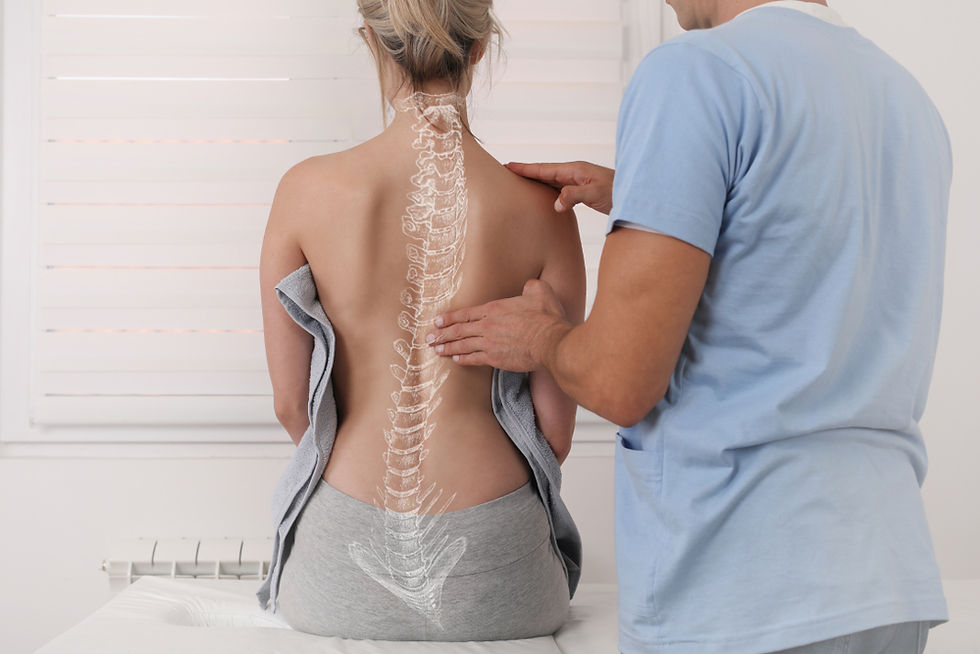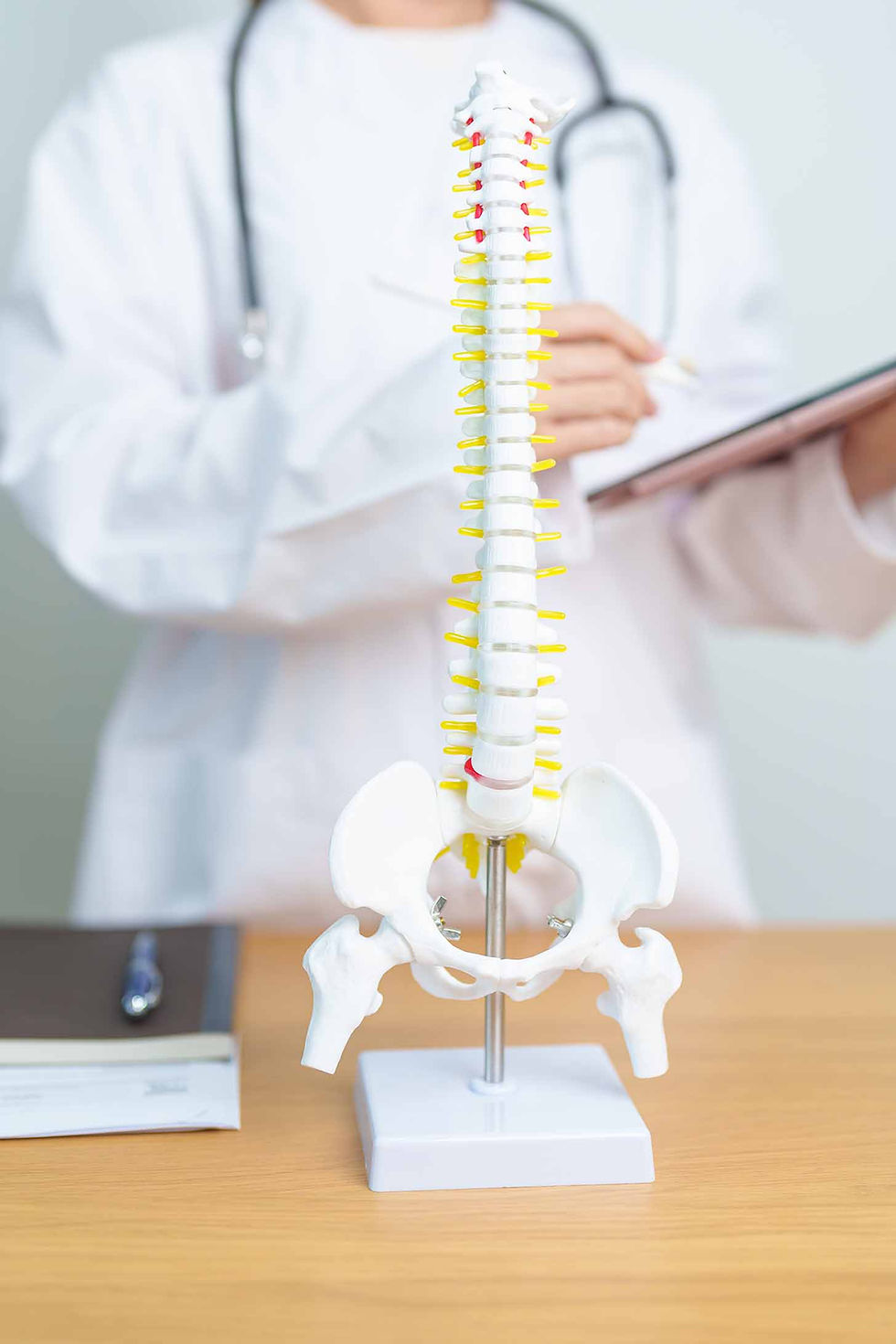
What causes Scoliosis?
There are a number of potential causes of scoliosis, but in most cases, an exact cause is not known, which physicians will call “idiopathic scoliosis”. Other conditions known to cause abnormal curvature of the spine include genetic conditions and congenital abnormalities (meaning “present at birth”), among others.
Adolescent girls are most often diagnosed with idiopathic scoliosis.


Treatment for Scoliosis – Common Options
Option 1: Observation
Put simply this option means “do nothing for now but keep watching”. When the patient is only suffering from a small abnormal curve, especially while they are still growing, many specialists will choose to leave the condition alone, monitoring periodically for changes. The reason is that in many cases the condition will likely not worsen and may not necessitate any treatment. In some cases, the medical scoliosis specialist may decide to refer the patient to some physical therapy.
Option 2: Bracing
In certain condition, typically limited to growing children, the specialist may prescribe some corrective bracing with the mindset of preventing further adverse progression of the scoliosis.
Option 3: Surgical Treatment
Surgery is typically only recommended in cases that involve more severe cases of scoliosis, and even then it is typically limited to adolescent and adult patients.
In rare cases, most commonly when a curve is causing an undesirable appearance for the patient, surgery may be performed for smaller curves also. Forinstance, in cases where smaller curves are persistently symptomatic (i.e. generating constant pain and/or discomfort), surgery may be recommended.
The orthopedic surgical correction of scoliosis is typically achieved by the surgical implantation of rods and devices into the spine, which correct the spine curvature.

Scoliosis Surgery in Arizona
If surgery is in fact what you need to get past the challenges presented by this condition, then you should avoid the temptation to rush into the first opportunity to get something done.
There are numerous surgical and non surgical scoliosis treatments available in Arizona and you should research them all and get a few opinions before making a final decision.
We briefly mentioned a couple of different surgical approaches above, but there are other options to consider too based on the specifics of your situation and, of course, surgery is still only one step towards putting this difficult time in the past. You also need to consider things like recovery time and other potential factors.
The best way to tackle this situation is to thoroughly evaluate your scoliosis surgery procedure options in Arizona with a doctor who knows as much about this condition as anyone in the medical industry. That someone is Dr. Rafath Baig, who is as committed to patient education and understanding as he is to the ultimate results of treatment, as he feels that the former is an integral component of the latter.
Dr. Baig will go through all of the different types of scoliosis surgery and even non-surgical approaches that could help you and do so in detail, providing you with a deep understanding of what each involves in terms of the process, the treatment goals, and expectations for recovery, among other things.
From there, you’ll collectively choose what’s best for your chances of recovery and other important factors such as your comfort and your overall health. Evaluating your scoliosis surgery options in Arizona should be an interactive process, and with Dr. Baig, that’s exactly what it is.
If you are a Phoenix, Gilbert, Mesa or Arizona resident with Scoliosis and you are seeking an orthopedic scoliosis surgeon specialist. Please feel free to contact us today for your appointment.

Get maximum relief with minimal risk

MINIMALLY INVASIVE
SPINE PROCEDURES
ENDOSCOPIC
SPINE SURGERY
STEREOTACTIC
SPINE PROCEDURES
NON-SURGICAL
TREATMENT OPTIONS

WE DIAGNOSE THE ROOT
Chronic back pain can be debilitating and leave you feeling hopeless. When Craig wasn’t getting the care he felt he deserved, he reached out to Dr. Baig to get the help he needed.
Unfortunately, this is a common problem: People suffering from back pain see a doctor, get diagnosed with some type of “chronic” condition, obtain a prescription and perhaps go to a few physical therapy appointments. They feel a bit better for a time, but the root of the problem is never diagnosed or properly treated. This is how back pain can become chronic, and this is why people ultimately seek the help of Desert Spine and Scoliosis center, expert back surgeons in Phoenix.
Dr. Baig, one of the most respected back surgeons in Phoenix, helped Craig identify his problem by relying on his years of expertise as a spine specialist in Phoenix. With the proper treatment, Craig’s condition improved and he was able to get back into life without the terrible pain that had dragged him down for so long. This is what patients should reasonably expect from our team of Phoenix spine surgeons.
SUCCESS STORIES
For an active 39 year old who participates in Jiujitsu, having a spinal fusion would not have been the right thing for her. We were able to get her back on the mat after a successful disc replacement and she is back living her life
NO MORE BACK PAIN!
For an active young mom, having a spinal fusion was out of the question.
She was back in the gym THE SAME DAY after she had an Endoscopic Decompression. Dr. Baig and is living life
PAIN FREE!
This personal trainer got a cervical disc replacement.
She was able to avoid a fusion, keep her her range of motion, and get back
into the gym
PAIN FREE!

WHAT OUR PATIENTS SAY
We wanted to take a moment to express our heartfelt gratitude to our patients who take the time to leave a review about their experience at our practice.
Your kind words and feedback are greatly appreciated by our entire team, and your review helps other patients make an informed decision about where to turn to for care.
Thanks again for sharing your experience with others. You are making a difference.
T.M. ~ Actual Patient
"Dr Baig and his team are phenomenal. I had a compressed nerve due to a bulging disc and was able to be seen relatively quickly. Surgery was quick and flawless and I have no complaints at all. I truly appreciated how fast they worked to get me seen and out of all the pain I was in! Highly recommend them."
A.H. ~ Actual Patient
"Dr Baig literally changed my life for the better. I had a severely pinched nerve in my neck and needed to get surgery. Immediately at my first consult I felt comfortable and in good hands. I even walked away with a smile on my face during that scary time.
Surgery day couldn’t have gone better. The team he had also had a great bedside manner and helped keep me calm.
After the surgery and in the recovery room, he came in and checked on me and made sure I was all good before releasing me."
S.D. ~ Actual Patient
"Dr Baig was going to be my second opinion for an upcoming scheduled spinal surgery. After my appointment, he will be my surgeon. He gave me a lot of information that was lacking from my other doctors. I felt very comfortable with Dr Baig and his entire office staff. Looking forward to living pain free after we strengthen my bones. It’s going to be a permanent fix and not a bandaid."
Consult Our Back Surgeons in Phoenix
Back pain can often be a result of an accident, injury, or congenital conditions such as scoliosis. Certain forms of back pain can be a result of the natural aging process, including conditions such as disc protrusion and spinal stenosis.
Today, advancements in imaging, and non-surgical techniques have led to more treatment options than ever before, allowing us to return our patients the life they once knew…usually without the need for invasive spine surgery.
Typically, back surgeons in Phoenix offer one type of help, even though there are many others available. When you work with Dr. Baig at the Desert Spine and Scoliosis Center, you can rest assured that everything is on the table when it comes to potential treatments that are accepted by the medical world.
SUFFERING FROM SCOLIOSIS IN ARIZONA? CONTACT US!
LOCATIONS
Conservative care you can trust, with multiple locations in the valley!
Just how ‘minimal’ is minimally invasive spine surgery?
Book your appointment today and we'll be happy to educate you!
As a top-rated spine specialist, Dr. Baig understands that this complicated part of the body can lead to many different problems, and each possibility will be considered before deciding on a treatment protocol.
Get answers, get help, get back to a better quality of life––schedule an appointment today.
FAQs About Scoliosis Surgery in Arizona
Will insurance cover scoliosis surgery?
In most cases, insurance providers will cover scoliosis surgery when it is deemed medically necessary. Coverage details depend on your individual plan and the type of scoliosis surgery procedure performed. It’s always best to confirm directly with your insurance company or have your scoliosis surgeon assist you with the verification process.
What types of scoliosis surgery are available, and how do they differ?
There are several types of scoliosis surgery, including spinal fusion, vertebral body tethering, and minimally invasive scoliosis correction. Each scoliosis surgery procedure varies in its approach, recovery time, and long-term outcomes. Your scoliosis surgeon in Arizona will determine which method is best based on the degree of curvature, age, and overall health.


.png)
Scoliosis Surgery Options in Arizona
What is Scoliosis?
Each person has natural curves in their spine. One of the easiest curves to spot is the curve that causes the lower back to sway inward when viewing from the side. These curves serve a number of functions, including absorbing shock, promoting mobility and shaping shoulders.
When viewing from the front or the back, the spine should be straight. In some people, however, the spine abnormally curves sideways and may rotate, forming an “S” shape.
In some individuals this “S” may be visible when bending forward or standing. In many, however, the curvature is only visible on X-ray. While some of these abnormalities in posture (e.g. tilted shoulders and hips and/or uneven protruding shoulder blades) can be caused by abnormal curves; this is not simply a problem of “poor posture”. A person cannot exercise the curves out or try to sit or stand straighter.
This condition of abnormal curvature of the spine is called “scoliosis”.
_PNG.png)



